India is known as the land of festivals, both sacred and effervescent. Among the many festivals celebrated on Indian soil, Navratri is one of the most spectacular and graceful celebrations, primarily by the Hindu community.
The word Navratri is a combination of two words: “Nava,” which means “nine,” and “Ratri,” which means “nights,” and when combined, it represents nine days of festive celebrations. This nine-day festival celebrates the victory of good over evil, restores dharma over adharma, purifies negativities, and cultivates positivity and holiness.
During the Navaratri celebrations, the female cosmic power—Ma Durga—is worshipped, sung to, and invoked in nine different forms. Maa Durga’s various forms represent power, strength, bravery, knowledge, beauty, grace, and auspiciousness.
Shubh Muhurat or Kalash Sthapna
Sharadiya Navratri begins on September 26, 2022, and concludes on October 5, 2022. During Navratri, Maa Durga is worshipped in nine different forms. The Navratri festival will begin with the installation of the Kalash (Kalash Sthpana). The auspicious time for Kalash Sthapana this year is from 6.11 a.m. to 7.51 a.m. on September 26, 2022.
Let’s explore the 9 avatars of Ma Durga. Let me give you a slight peek into each of them:
1. Goddess Shailaputri
“Shail“ indicates mountains and Putri means daughter. The first amongst the 9 forms of Nav Durga, she is worshipped on the first day of Navaratri. She symbolises the combined power of Brahma, Vishnu and Mahesh. As per our Indian mythology, Shailaputri is considered to be the rebirth of Sati, who was also the first wife of Lord Shiva aka Mahesh.
- Colour To Wear: The colour orange is associated with the day of Shailaputri. It symbolises zeal, success, and happiness.
2. Goddess Brahmacharini
The second day honours the deity Brahmacharini. She pursued severe penance to het Lord Shiva as her husband, as her name Brahmacharini represents the female who practises Brahmacharya. Goddess Brahmacharini is worshipped in her unmarried form. She is the Maa of penance and austerity (renunciation from worldly pleasures). Many women in India observe a fast to pay homage to their devotion to their partner Shiva, symbolising both meditation and spiritual fulfilment. She walks barefoot with a Japa mala in her right hand and a kamandalu in her left. She bestows grace, bliss, peace, and prosperity on her devotees. She is barefoot and adorns a white cloth. White is considered as her favourite colour and to please Maa Brahmacharini devotees offer her white flowers and clothes.
- Colour To Wear: White is the colour of Brahmacharini, and it is associated with purity, virginity, inner peace, and sacredness.
3. Goddess Chandraghanta
The third day of Navratri is dedicated to the Goddess Chandraghanta. Chandraghanta has a half-moon shaped like a bell on her forehead, which explains her name’s etymology. On the third day, her followers honour her for bringing them peace and prosperity. She rides a tigress and is described as having ten hands and three eyes. Trishul, Gada, the Sword, and Kamadalu are in her four left hands, while Varadamudra is in her fifth. In her right fourth hand, she holds a Lotus, an Arrow, Dhanush, and a Japa mala, and her fifth right hand is in Abhaya Mudra.
- Color to Wear: Devotees wear red on the third of Navaratri to represent passion, fearlessness, and sexuality.
4. Goddess Kushmanda
The name Kushmanda comes from the fact that the deity Kushmanda has the ability to live inside the blazing sun. She is credited with creating the world with her divine and radiant smile, despite having a luminous body like that of the sun. The Navratri significance of this Goddess is that she bestows good health and strength on her worshippers. She is represented by eight hands and is thus known as Ashtabhuja Devi. Eight to ten hands are depicted holding a trident, discus, sword, hook, mace, bow, arrow, two jars of honey, and blood. Her one hand is always in the Abhaya mudra form, which she uses to bless all of her followers. She is riding a tiger.
- Colour to Wear: The colour of the day and Goddess is royal blue, which represents elegance and wealth.
5. Goddess Skandamata
The fifth day of Navratri is dedicated to Skandamata, the mother of the war God Skanda (Kartikey). She rides a ferocious lion while holding Lord Skanda (the infant) in her lap. It is believed that she was chosen as the commander in chief of the war against the demon, and thus she is also known as the “Goddess of Fire.” Her iconography depicts her with four hands, a lotus flower in her upper two hands, one hand in Abhaya Mudra, and one right hand holding Skanda. Padamasani is the name given to her when she is seated on a lotus flower.
- Colour to Wear: Wearing yellow will keep you cheerful and energised on this day.
6. Goddess Katyayani
Katyayani, the sixth form of Maa Durga, is also known as Mahalaxmi. Katyayani was born to defeat the bull demon Mahishasura. She is called Katyayani because she is the daughter of Sage Katyaayan. According to legend, Sage Katyaayan worshipped Goddess Durga, and Maa Durga, pleased with the sage’s devotion, agreed to take birth as his daughter. Her distinguishing characteristics include rage, vengeance, and ultimate triumph over evil. Those who remember her with a pure heart and the greatest faith are bestowed with boons. She is depicted with four hands and sits on a magnificent lion. She holds a sword and a lotus in her left hand, and her right hands are in Abhaya Mudra and Varadamudra.
- Colour to Wear: Green is the colour of new beginnings. It is worn to represent fertility and growth.
7. Goddess Kalaratri
Maa with a dark complexion, a fiery soul, and a fearless demeanour. Her large red eyes, blood-red tongue, and sobre on hand distinguish her as the Goddess of Death. The Kaalratri form of Goddess Durga is worshipped on Saptami or the seventh day. She is said to have sacrificed her golden skin colour in order to kill demons. She is also known by the names Kali Maa and Kalratri. She is seen seated on a donkey with her hair scattered and three round eyes. She possesses four hands. Right hand in Abhaya Mudra and Vardara Mudra, left hand with sword and iron hook.
- Colour to Wear: The colour grey is worn on this particular day. It balances the energy and keeps people grounded.
8. Goddess Mahagauri
Mahagauri is the eighth form of Goddess Durga and is regarded as the most graceful form among the nine forms. She is attributed with performing the most rigorous form of Tapasya, in which she did not move at all. As a result, a lot of dust and dirt accumulated on her body, which Lord Shiva cleaned by pouring water from the Ganga. As a result, she is regarded as one of the purest forms of Durga. Her beauty glows like pearl purity. Being the Goddess of purity, cleanliness, endurance, and peace, her worshipper’s flaws and mistakes are burnt to ashes. Mahagauri has four arms. She keeps her right hand in the pose of alleviating suffering and a trident in her lower right hand. Her upper left arm holds a tambourine and the lower left provides blessings.
- Colour to Wear: Wear purple for Mahagauri pooja, which represents opulence, nobility, and power.
9. Goddess Siddhidatri
The ultimate power, the creator and giver of all perfect things. She possesses natural healing powers and sits on a lotus flower in a blissfully happy and enchanting pose, holding a variety of items in her multiple hands. These items, which include a mace, a lotus, a conch shell, and a disc aka discus chakra, represent various things. She is prayed to in order to gain knowledge.
- Colour to Wear: Wear peacock green to show grace, integrity, and watchfulness.
Do you know of the legend owing to which Navaratri is celebrated?
Well, the great battle that took place between Mahishasura and Goddess Durga is the reason behind the celebration.
Mahishasura was an asura who had a blessing given to him by Lord Brahma of immortality. Albeit the blessing had one condition-he could be defeated by none except a woman. Thus, emboldened by this, Mahishasura attacked all 3 elements aka earth, heaven and hell too. Seeing his barbarous intentions the Gods prayed collectively to Brahma, Vishnu and Shiva. Here is where Lord Vishnu created a woman and thereby she was bestowed powers by Shiva and Brahma to destroy Mahishasura. Thus, came to be the existence of Goddess Durga who ultimately defeated Mahishasura. Fighting Mahishasura for 15 long days in a battle which is touted to have shaken all three elements to the core, Mahishasura kept changing form in an attempt to thwart the Goddess. Eventually, when he took the form of a buffalo, she managed to pierce his chest with her revered Trishul killing him instantaneously.
And hence, the festival is celebrated as a revered ode to the Goddess signifying the victory of good over evil. Devotees fast for these days and perform puja, breaking their fast on the last day.
So, hope you guys liked this interesting piece I assimilated to give you a peek into the history and significance behind Navaratri and the 9 forms of Goddess Durga. Stay tuned for a lot more exciting stuff coming up especially for this festive season, right here at Booxoul, India’s best book review and lifestyle website.
This blog post is part of the blog challenge ‘Blogaberry Dazzle’ hosted by Cindy D’Silva and Noor Anand Chawla and sponsored by BakezbyDaizy.



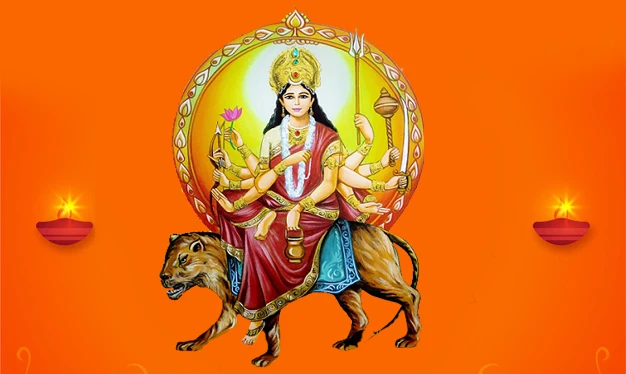
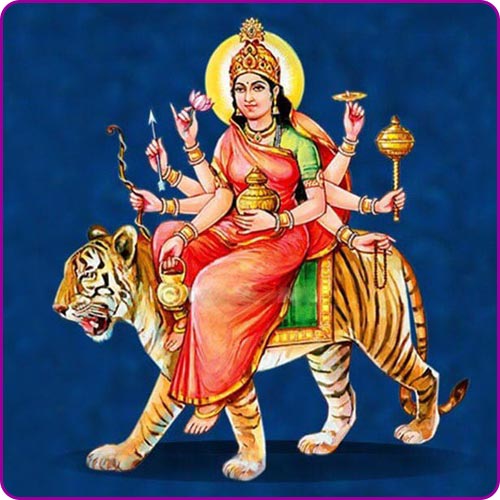

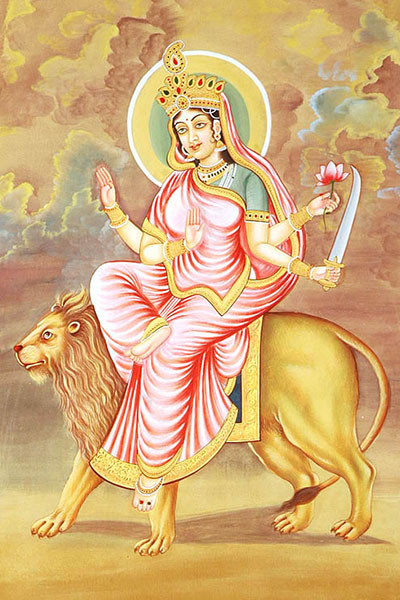
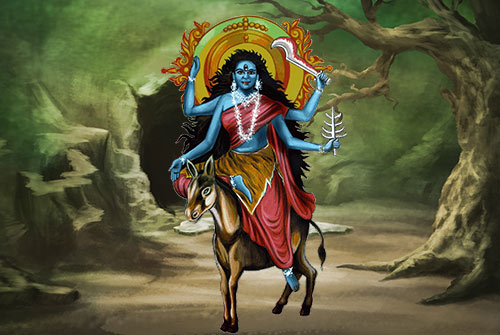
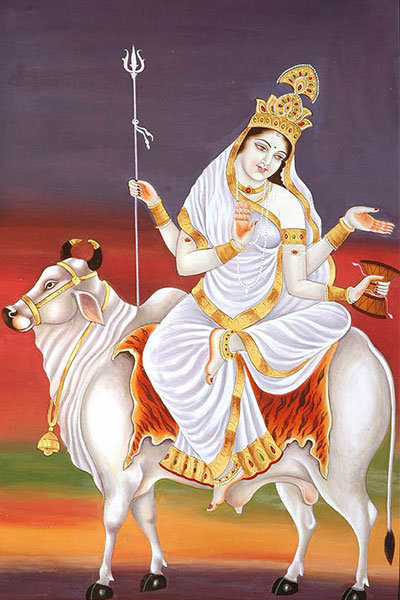
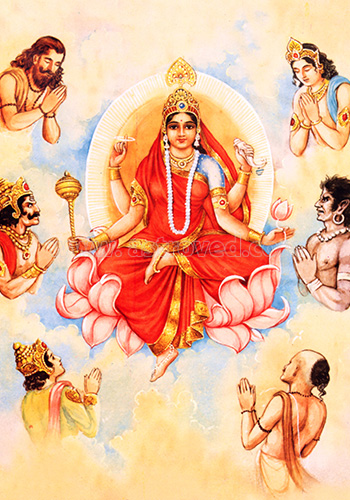

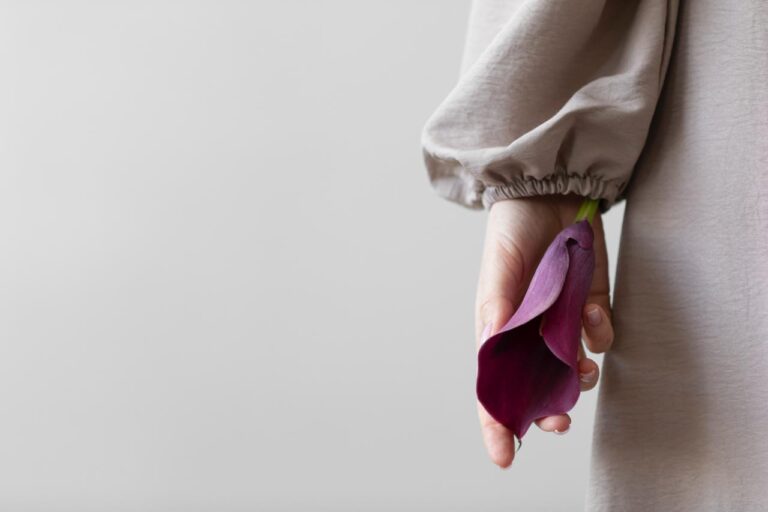


This is something new for me, especially I’m not Indian. It’s great to learn about them and understand your culture. It’s quite interesting!
Thanks for your appreciative words Jeannine. Yes, our culture is beautiful and you would love to understand it for sure ya.
It is always good to know something extra and what you have shared her is something I never heard about. Navratri to me was the 9 days celebration of what, why is now clear.
So glad you liked it Flavia
This is really informative. I knew about the goddesses but I didn’t know that each day had a colour associated with it. Learned something new today. Thanks for sharing about it.
Loved the post Rekha… soooo informative. I knew the different colours associated with the days but very little about the different forms of Maa Durga. I’m so happy that I got to know so much today.
Good to know nine avatar of Ma Durga in detail. Thanks for sharing. I am going to share with my kids too.
You are welcome Swati. So glad liked it.
I love to read and write more on areas which are lesser known among people and this post is one among them and I loved the way you explained every avtar of Ma is such detailed manner.
Thanks Samata for your appreciative words.
Happy Navratri, Rekha. I am wearing white today. What in depth information you have shared. I have written about Nine avatars but in a shorter form. Indian mythology is incredible.
Thanks Harjeet for your appreciative words. Yes, indeed Indian mythology is incredible.
I really like how you explained each Ma avatar in such detail. Very informative post to share with kids.
A very informative post. I love how the colors complement each goddess. Your bookish posts are as much a treat to read as your lifestyle posts.
Thank you so much Ritu for your appreciation. I am super glad you like them both ya!
Rekha, lovely post. I don’t know anything about this Navratra, apart from Garbage???? You give so much details of this festival and Maa Durga.
Thank you so much Neeta. Am glad you liked it. Will keep on working and getting you the best content I can, from all fields.
This is very informative! My name was kept after Shailputri and often people ask me the meaning the answer I give is Mataji ka avatar. All the 9 avatars are so powerful and vibrant.
Indeed, the avatars are and so is your name Shail ji! Thanks for your appreciative words.
Aptly timed post. Very informative too as i did not know a few of the avatars. Significance of the color to the days is also symbolic, though i received different versions for different days in WhatsApp ????
So glad of your appreciative words. Thank you.
Very well-written and concise article. Short but super informative too!
Thank you so much for your appreciative words. Am glad you found it informative.
Being a Bengali, Durga puja is an integral part of our lives. However I didn’t know about the Goddesses of Navratri till the past 2 years. Beautiful post!
Thank you so much.I am glad you found it informative and beautiful too.
Very informative. Thank you for sharing this. It is a nice way to understand and also teach kids.
You are welcome. Am glad you found it useful enough to teach the kids too.
Being a bengali I must say I love durgapuja. And your post is really informative.
Thank you so much for your words of appreciation. Am glad you found the post informative.
This is such a great post with lots of information about the nine days of Navratri. Bookmarking it.
Thank you so much for your appreciation. It means a lot. So glad you bookmarked it.
Very well-researched post!